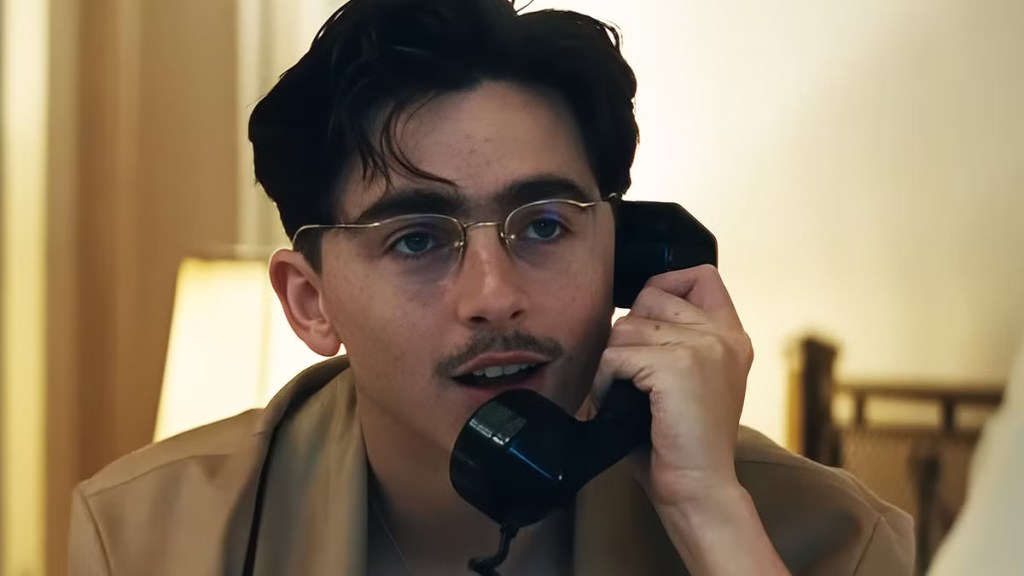This week the UK government launched an ambitious 10-year plan to deal with illegal drugs which includes a massive cash boost for treatment and an unhinged obsession with people who get high for fun.
Underpinned by “an investment of over £3 billion in the next three years”, the strategy, From harm to hope: a 10-year drugs plan to cut crime and save lives, aims to hunt down drug suppliers, deter people from using drugs, and improve drug treatment.
Videos by VICE
The strategy comes in the wake of record numbers of drug related deaths, a rise in child drug gangs and a decade of government cuts to vital welfare and health services in the most deprived parts of the country.
The government said its plans for tackling drugs were a key plank of Prime Minister Boris Johnson’s stated mission to reduce inequality, known as “levelling up”, in the UK, a country that has been governed by the Conservative Party since 2010, and for 27 of the last 40 years.
The plans will see the expansion of the government’s flagship drug project, Operation ADDER (Addiction, Diversion, Disruption, Enforcement and Recovery), which uses “tougher policing with enhanced treatment and recovery services” to tackle drug misuse and offending in areas most affected by drug misuse.
One of the main departures from previous drug strategies is to single out recreational drug users – people who take drugs to have a good time – as targets for strict law enforcement. According to the government, they are legitimate targets not just because they use illegal drugs, but because they help to fuel murder and child exploitation on Britain’s streets.
THE PR BULLSHIT
Before the strategy was launched, the government decided it wanted to avoid British tabloids criticising it for spending huge amounts of money on people addicted to drugs. So it had to choose an alternative narrative, an attack not just on drug gangs, but also on recreational “lifestyle” drug users.
On Sunday, via an interview on a train for the Sun on Sunday, Johnson dropped the bombshell that as part of the new strategy, the government was looking at confiscating the passports and driving licences of people caught taking recreational drugs, both in the House of Commons and elsewhere. No matter that the passport-snatching policy was not enshrined in the strategy itself (it’s an idea that “might” be mentioned in proposed legislation due to be published next year), the media lapped it up.
This dovetailed neatly, as the government knew it would, with the false mantra parroted over the last four years by ministers, police chiefs and the media, that recreational users of cocaine, particularly the middle classes for reasons unknown, are partly responsible for London’s epidemic of youth homicides and county lines drug dealing in the UK.
It sounded to the public like a slightly reasonable policy: people should be punished if, as Crime and Policing Minister Kit Malthouse said, their actions are leading to “violence and degradation”. The Home Office fed journalists a juicy stat to ramp up fears about drug trade violence, stating that “half of all the murders in the UK are drug related”. Britain, it seemed, was like The Wire.
But the only problem is that there is no evidence to show that recreational drug users – whoever they are – are remotely responsible for county lines and youth killings, and instead it is chiefly the government which is to blame. Also, the line about half of murders being drug related? The Home Office’s definition of what makes a “drug-related murder” goes far wider than drug gangs arguing over turf or stashes. It’s so wide as to be meaningless. It includes homicide victims or suspects who have used drugs in the past, or have ever been caught selling drugs, or even smelled of drugs. If someone was stabbed by a stranger and the victim had been smoking weed the night before, or the suspect had been caught selling ecstasy in a club five years ago, it could be classified as a “drug-related murder”. It’s a nonsense statistic.
As VICE World News has documented many times, there is little, if any, evidence to support this narrative that recreational drug users fuel youth violence or county lines.
On Monday morning, the drug strategy’s media circus was cranked up. To ram home the ‘tough on crime’ narrative that voters apparently enjoy, the public were treated to a cosplay scene where Johnson dressed up as a police officer outside a live drug bust for the cameras which, it turned out, yielded zero arrests.
Meanwhile, writing in the Guardian, Health Secretary Sajid Javid managed to avoid any mention of the UK’s drug death crisis, despite his job, while trying to convince people that actually “every drug” is linked to county lines drug dealing. Malthouse, who is heading up the government’s new unit to tackle drugs, told the Daily Telegraph that people should call the police if their friends start smoking weed.
What became clear from the government’s punitive-obsessed launch of its drug strategy is that it seems these days helping vulnerable drug users – which is the main focus of its new strategy – is sadly seen as bad PR, particularly in the right-wing press it courts.
“The government can’t seem to announce good news about the fact it’s going to be helping thousands of people with drug problems, without being ridiculous and covering it up in a smokescreen of drug war grandstanding,” said Steve Rolles, senior policy analyst for Transform Drug Policy Foundation.
“The media management was all about kicking down doors. But they seem far less keen to talk about how much money they were putting into treatment – presumably they are worried about tabloid pushback about ‘undeserving drug addicts’ getting new cash while there are cuts elsewhere,” he continued.
“There is some good news for this country hiding in the strategy, but it’s hard to see through the thicket of drug war idiocy.”
IMPROVING DRUG TREATMENT
This is the good news. It’s the backbone of the strategy and will save many lives.
Last summer an independent review into the UK’s drug treatment system carried out by Dame Carol Black concluded it was “on its knees” and “not fit for purpose” due to a decade of government cuts.
She demanded the government take action, and put its money where it’s mouth is, or face the “tragic consequences” of spiralling crime and drug deaths. To the surprise of those working in the drugs sector, all her recommendations appear to have been adopted.
The biggest share of funding announced in the strategy, £780 million, will be spent over the next three years on rebuilding the country’s neglected drug treatment system. This will make it easier for everyone with drug problems, especially the estimated 300,000 people addicted to heroin and crack in England and Wales, to get help. The money will be used to employ more drug workers, increase rehab places and make it easier for people getting off drugs to get jobs and get help with mental health and housing.
In the strategy, the government confessed to damaging the drug treatment system due to chronic disinvestment, noting that “prolonged shortage of funding has depleted the workforce..caseloads have grown too high..there is a lack of specialist services, including inpatient detoxification and residential rehabilitation”.
The plans are ambitious. “The government is committed to transforming the lives of those affected by drug addiction,” says the strategy. “We will create a system where no one falls through the gaps, where there is no stigma attached to addiction and it is treated as a chronic health condition, and where people who need it are provided with long-term support.” It said the individual will be put “at the centre of everything we do” and the government would stop the revolving door in and out of prison.
The levelling up agenda will mean that those areas suffering from the worst deprivation and drug problems, particularly some northern cities and seaside towns, will be the first to receive the benefits of the improvement in drug treatment, by “targeting first those neighbourhoods which suffer the most, and ensuring we reach every local authority over the next three years”.
The document pledged to deliver “a world-class treatment and recovery system”, including by 2025 to have prevented 1,000 deaths and to increase the number of places in drug treatment by 50,000.
“It’s sad that it has taken five years and hundreds of avoidable deaths for the government to implement the Advisory Council on the Misuse of Drugs 2016 recommendation to invest in drug treatment to save lives. But it is welcome that it is now acting on this need,” said Alex Stevens, Professor in Criminal Justice at the University of Kent.
TACKLING SUPPLY
This is what the police have been doing for 100 years without much luck. But they are carrying on, but in a slightly more high tech way.
There is quite a cute diagram here which sums up how the police try and stem the drug trade:

The strategy pledged to spend £300 million on tackling drug supply networks, with £145 million targeting county lines gangs. It said: “Given the scale of the threat and the rise of the violent county lines distribution model, breaking drug supply chains and ‘rolling up’ county lines is a priority for the whole of government, the police and all law enforcement partners.”
There is a promise to increase surveillance of trains and cars to make life more difficult for county lines gangs as they move gear and runners across the country. The government hopes it will close down 2,000 county lines by 2025. But evidence from the last decade of the police trying to shut down urban drug crews has shown that once one line is closed, often there is another to take its place.
There are also plans, with various flashy sounding names such as Cerberus and Plutus, to have another go at stemming the constant flow of drugs coming into the country and drug money seeping out into the legitimate world. The government knows that if it can’t stop drugs from getting into prisons, which are designed specifically to keep things like drugs out, it might as well give up, so it is ramping up the number of X-ray body scanners across the prison estate.
PERSUADING ADULTS TO STOP TAKING DRUGS
This is where the strategy gets a bit sinister.
Although drug use among young people and adults is not as high as it was between the mid 1990s and start of the 2000s – mainly due to people smoking less weed – there has been a small rise in drug use, mainly cocaine, in the last decade. Even so the government wants “a generational shift in demand for drugs”. It promises to “take bold steps to change attitudes in society around the perceived acceptability of illegal drug use”.
It aims to do this through the classic carrot and stick method. First the government, through “a comprehensive domestic and international research project on reducing drug use across society”, will tell drug users, for example through publicity campaigns on TV and in university campuses, that drugs are not just bad for themselves but have global and local consequences too.
It paints drug users as mainly naive people who are blissfully unaware, despite half of Netflix being about the past and present terror of the global drug trade, of the downside of a rogue industry whose profits are so vastly inflated by prohibition.
“Most recreational users are sheltered from the social consequences of the drugs trade – the serious violence, human exploitation, severe addiction and crime – which are often felt by those living in more deprived parts of our country or overseas,” the strategy says.
“This is part of a harmful cycle where drug use is normalised. Adults using drugs socially often live relatively typical and otherwise healthy lives and may not recognise their role in fuelling the drugs trade or influencing and damaging the behaviour of others, including children.”
In reality, most drug users are far more aware of how the drug trade works than Tory ministers. The notion that county lines drug runners are selling powder cocaine to people at dinner parties, or that all these school kids are stabbing each other because of drug turf wars, has no basis in the real world – something Tory MPs appear to be completely zoned-out from.
For those who ignore this advice, the strategy warns, “there will be swift, certain and meaningful consequences which will be felt more strongly than today and will escalate for those who continue to offend…At this stage nothing is off the table”.
First up is a plan for police to send texts to customers listed on seized drug dealers’ phones. “When we seize drug dealers’ phones, we will use the information held on them to contact their customers with a range of messages to discourage their drug use and direct them to support. This will help to make sure that no one is, or feels, anonymous when they buy drugs.” The tactic has already been tried with scores of heroin and crack users found on dealers’ phones, but the government wants to widen this out to contact lists of people selling drugs such as weed, cocaine and MDMA.
A white paper – a document that set out the UK government’s proposals for future legislation – planned for next year could include a number of tougher sanctions, which is where the passport option gets a mention. “For repeat offenders we will explore options to change their behaviour via civil sanctions and court orders. This could include, where relevant and proportionate, curfews or the temporary removal of a passport or driving licence, measures that would escalate depending on the severity and frequency of the offences.”
It’s clear from the strategy that the government is extremely keen on tracking down, warning and punishing recreational drug users for their part in maintaining Britain’s £10 billion drug trade. But they are very elusive.
The strategy hopes to grab more recreational cocaine users by expanding test on arrests schemes – where people are tested for drugs if they are caught for other offences such as burglary – to include offences such as drunken violence and anti-social behaviour. But it knows that most recreational drug users never get arrested for anything and that this drug testing dragnet will likely just gather up those already known to the police.
PLANS FOR DRUG LAW REFORM?
Despite major changes abroad this year, with weed being legalised in Germany, Mexico, Luxembourg and in more states across the US, the Home Office has made it clear any legalisation talk was off the agenda for this strategy. It also dismissed decriminalisation, which “is often suggested as a simple solution to many of the problems caused by illegal drugs. This is not the case. It would leave organised criminals in control while risking an increase in drug use.” However, the government offers its support for de facto decriminalisation schemes – where people caught with drugs are offered advice rather than being prosecuted – being carried out by several police forces in the country.
STRATEGY WORD COUNT
Cannabis 3
Legalisation 0
Fun 0
Ecstasy/MDMA/ketamine 0
Cocaine 24
Consequences 11
Tough 18
County lines 38
Heroin 14
Crack 14
Gangs 15
Level up/levelling up 23
CONCLUSION
Published in the wake of record drug deaths, a rise in child drug gangs and a welfare system battered by years of austerity, the government could not get away with publishing a watery new drug strategy. The plan to systematically upgrade the country’s drug treatment system in such a holistic way is fantastic news for addicted drug users, their families and those who have been struggling to help them with meagre funds.
But there is also a worryingly doublethink at the heart of this strategy, where the government is trying to scapegoat drug users who commit no other crime for huge societal issues, such as the rise of child drug dealers and youth violence, while completely ignoring the fact that these phenomena have their roots in inequality and austerity.
In this document the government rightly admits to neglecting Britain’s creaking drug treatment system, although it does not go as far as Scottish First Minister Nicola Sturgeon earlier this year when she declared that all those who died from drugs in Scotland had been “failed” by the government.
However, what is missing from this strategy is another admission: that its neglect of the poorest parts of the country is not just responsible for generating and perpetuating drug addiction, but also for creating an army of disaffected young people from the country’s most deprived neighbourhoods who see nihilistic violence or selling heroin and crack in remote backwaters as their only future. Dame Carol Black, who wrote the independent reviews that shaped this strategy, acknowledged this link last year. To blame people who use illegal drugs for such huge social changes is a cynical and scandalous diversion from the truth.
More
From VICE
-

A24 -

Screenshot: Epic Games -

Mega Gyarados in Pokemon UNITE





